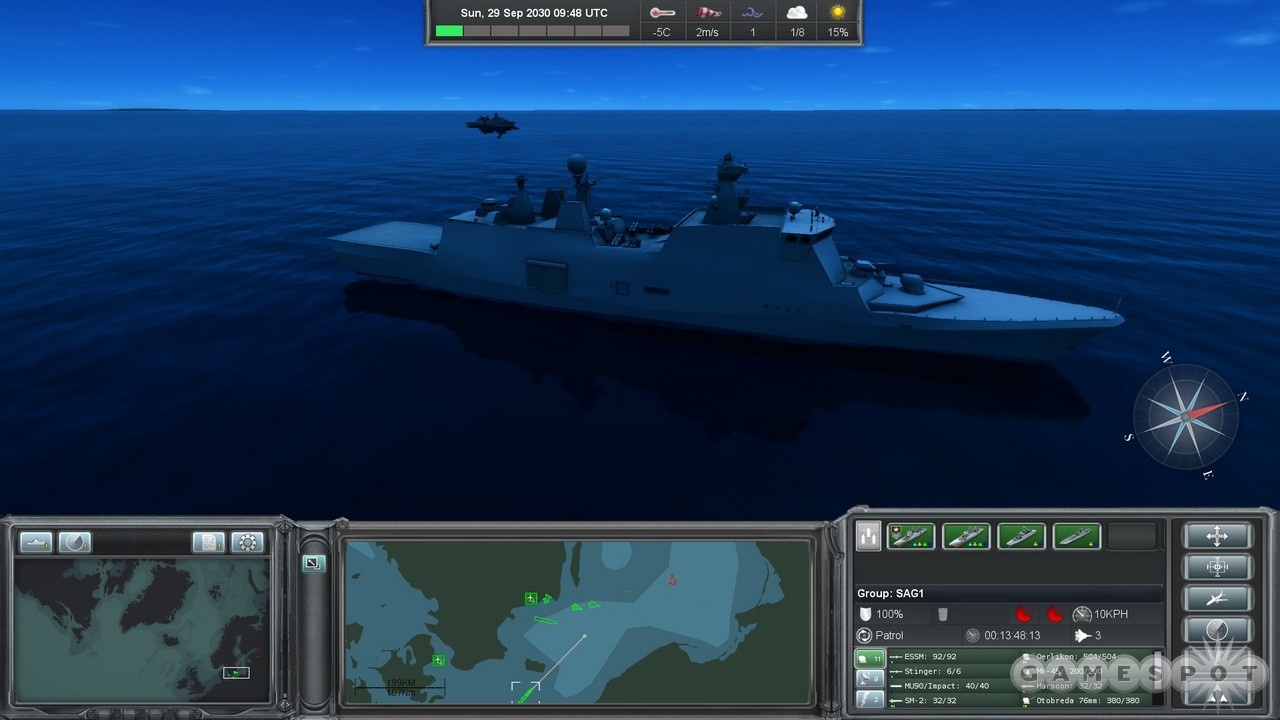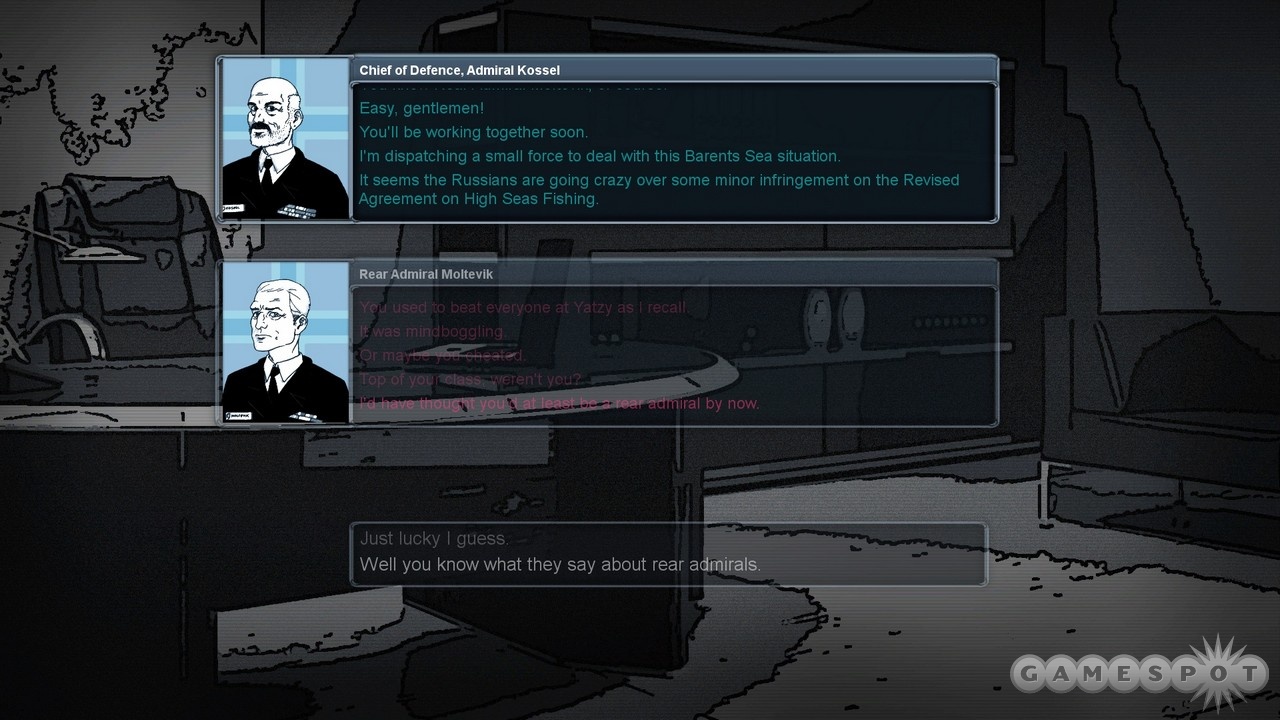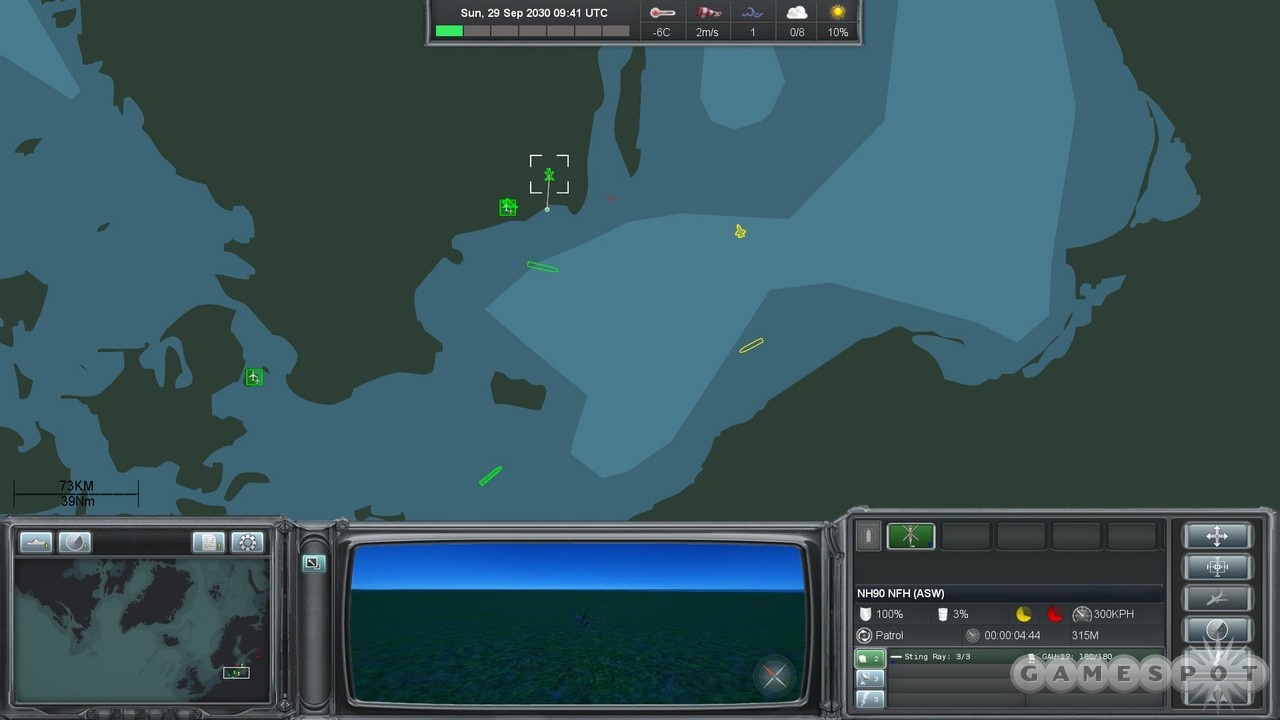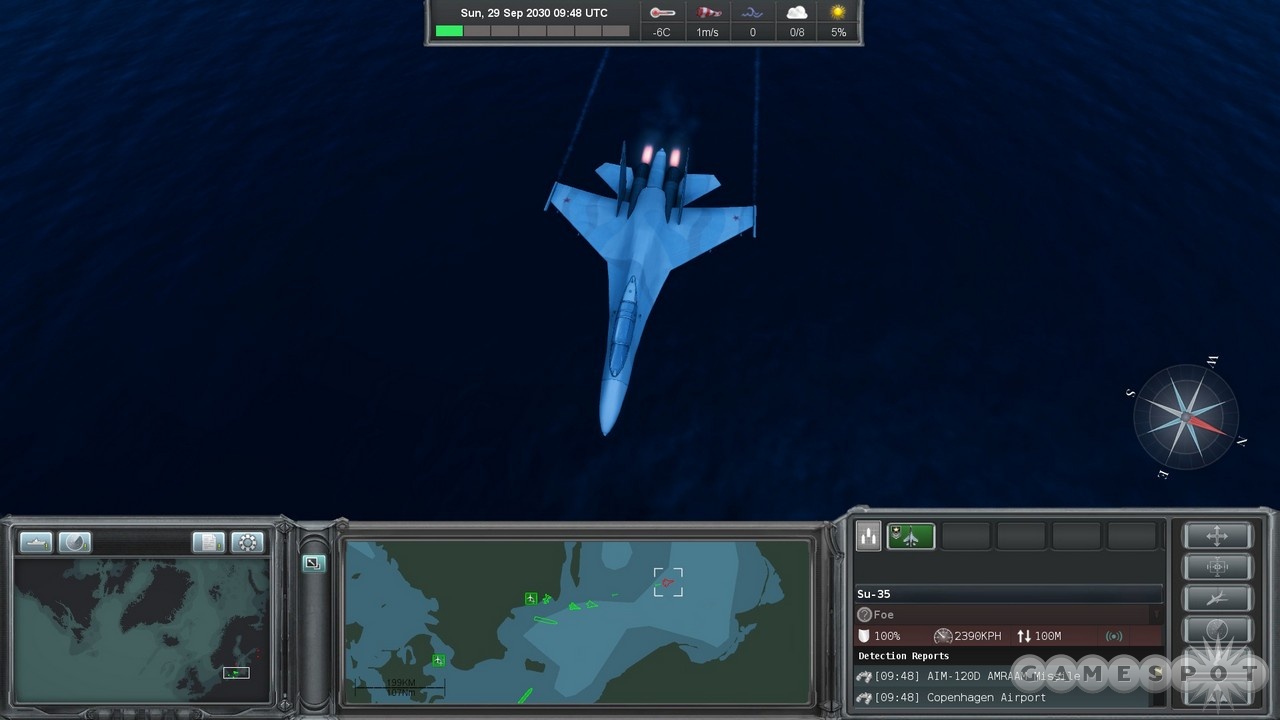Middle of the road. That's where Naval War: Arctic Circle lands. This ambitious sim comes with significant strategic depth, two involving campaigns sure to test your abilities as an admiral, and even reasonably thorough tutorials sure to get newbies over the learning curve. But it's hard to fully appreciate these good points due to the clumsy interface, the terrible visuals and sound, and the unforgivable absence of any way to save your progress during missions.

Everything about Naval War: Arctic Circle is straightforward. You get two lengthy campaigns depicting both sides of a war between NATO and Russia in the 2030s and a one-vs.-one multiplayer mode. The story unfolds during talking-head dialogue sequences between missions, chronicling the conflict over northern resources made more accessible since global warming got rid of that pesky ice. Conversations are witty and well written, which draws you into scenarios despite the subpar graphics in these scenes. You have to use your imagination to get past bucket-bottom art that features static faces drawn with all the talent of a third grader who has just graduated from coloring books. Photoshopping pics of actual naval officers would have been a better option.
In fact, the overall visual quality of the game is lackluster, though this is partyl in keeping with the subject matter. The focus is solely on commanding naval task forces from the perspective of an officer sitting in a war room. So the interface is bleak, comprising a simple top-down map screen main view with little ship and plane icons along with a small 3D window that tracks units out on the sea and in the air. The audio presentation isn't much better, thanks to the out-of-place rock music and the lack of significant battle sound effects. Nothing gets in the way of waging war on the high seas, but nothing adds to the story or atmosphere, either.

You can tweak the interface to give the 3D view more real estate, but the quality of the unit models and their choppy animations make doing so a waste of time unless you're aiming for nothing more than a close-up of an enemy blowing up real good. Controls are unintuitive, and everything feels a bit out of place. For at least the first few missions, you need to constantly remind yourself how to do basic things, such as send choppers out on recon missions, due to oddities like the need to close some windows to give orders and the inability to use mouse scroll to pan the map around.
Gameplay is dry in Naval War: Arctic Circle, but there is a lot of tactical depth. Even though this is a naval game, you command full task forces and spend at least as much time sending helicopters to hunt subs and fighters to intercept enemy fighters as you do playing Popeye. You are given a tremendous amount of control over your units, as well. Everything in the game is geared to be closely overseen, if not micromanaged, including loadouts and individual attacks. Units do function on their own, though. Forget about a dogfight, for instance, and your pilots will deal with enemy missiles by initiating evasive maneuvers all on their lonesome. That said, there isn't any room for customizing your fleet, picking ships, and so on. Campaign scenarios are set in stone, as are the non-dynamic campaigns, so you need to work with the hands that are dealt.
All of this combines to give the campaigns the feel of a big training exercise, not a real war where lives are on the line. This removes some of the tension and diminishes the replay value, because you know what to expect from each mission after beating it once. Without a mission editor, there's no way to introduce any more variety into the action.

Battles deal with small numbers, which makes engagements manageable and easy for a casual player to get into without feeling like a first-day cadet at Annapolis. But easy to get into does not mean easy. On the contrary, the missions can be extremely tough, and you must frequently resort to trial and error. Scenarios often open with you in the dark trying to locate enemies, which typically means that you spend the first couple of tries fending off barrages of missiles from out of the blue before even spotting any bad guys.
For the most part, you have to learn missions before you can beat them. Action comes so hot and heavy that you have little time to complain, though. Attacks are launched early and often in every scenario. Enemy artificial intelligence behaves in a consistent, right-to-the-point fashion, which typically results in foes going at you hammer and tongs from the moment that the mission begins.
One serious problem with all of the scenarios is the inability to save while a battle is under way. The game automatically saves your campaign progress, but only at the end of each successfully completed scenario. Missions vary in length, running from under a half hour to a couple of hours. Time can be sped up considerably, making long refueling trips or tedious recon patrols hunting for enemy subs soar by in seconds. You also usually know if you're winning or losing in the first 10 or so minutes of play, giving you the chance to bail out and try again without wasting too much time.

Nevertheless, there are some missions that can stretch to the three-hour mark and beyond, especially if you take your time probing for enemy positions and mulling over attack options. So even if the lack of a save feature isn't a total deal-breaker, it's inexcusable to release this kind of game without a full save feature. This is also the sort of red flag guaranteed to scare off casual gamers, which is counterproductive given the helpful tutorials.
There are some things to like about Naval War: Arctic Circle, and a few patches could add more appeal. Adding in a save feature could help immensely in making the game more playable in the short term, and releasing the mission editor promised by the devs could give the game a shot at long-term support from the wargame community. Even though there are some sore points at the moment, the game presents an in-depth tactical challenge for weekend warriors. Just know before pulling the trigger on a purchase that you're dealing with more of an ongoing project than a fully realized game.